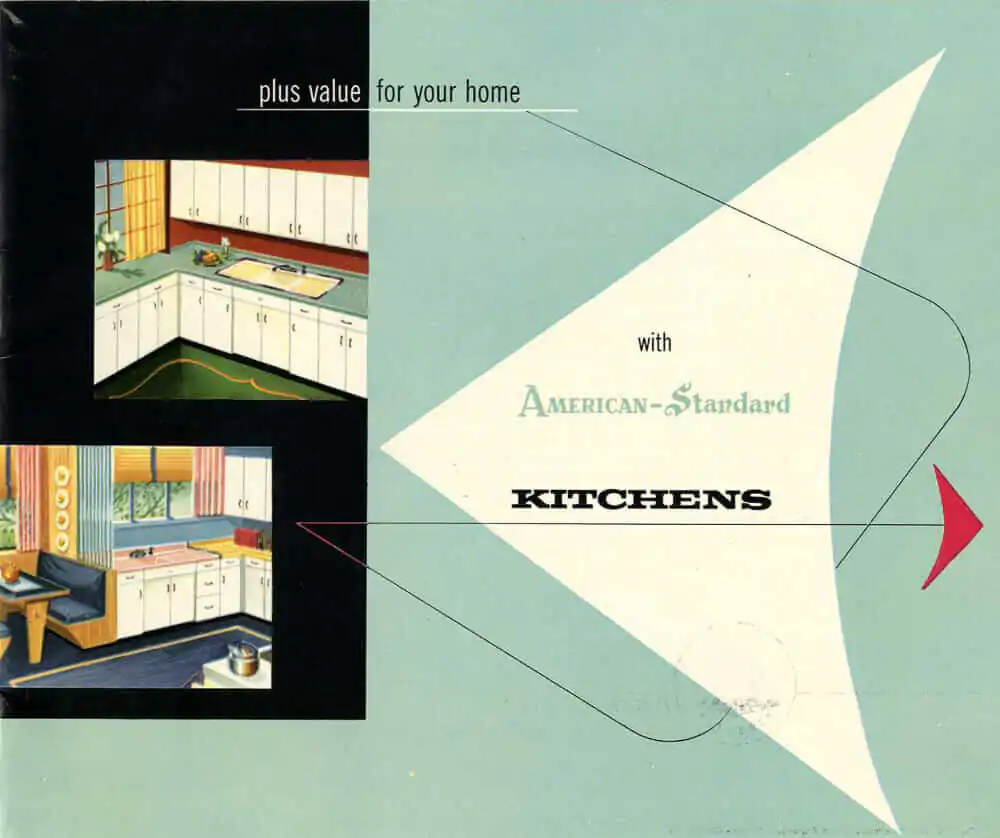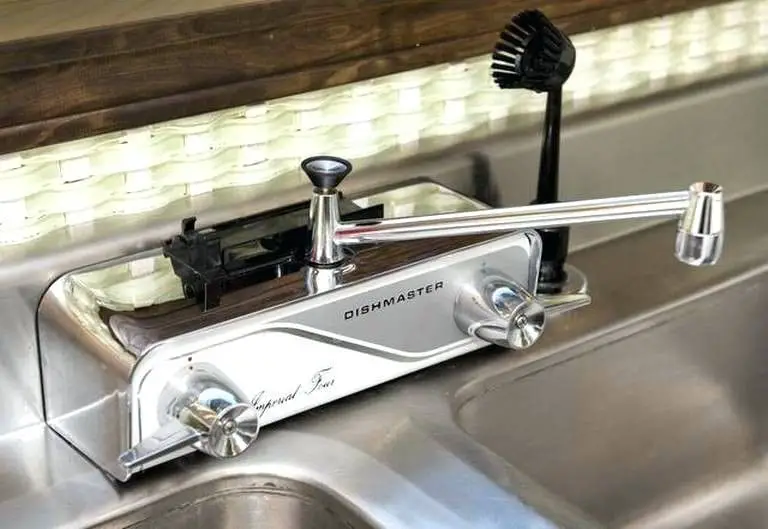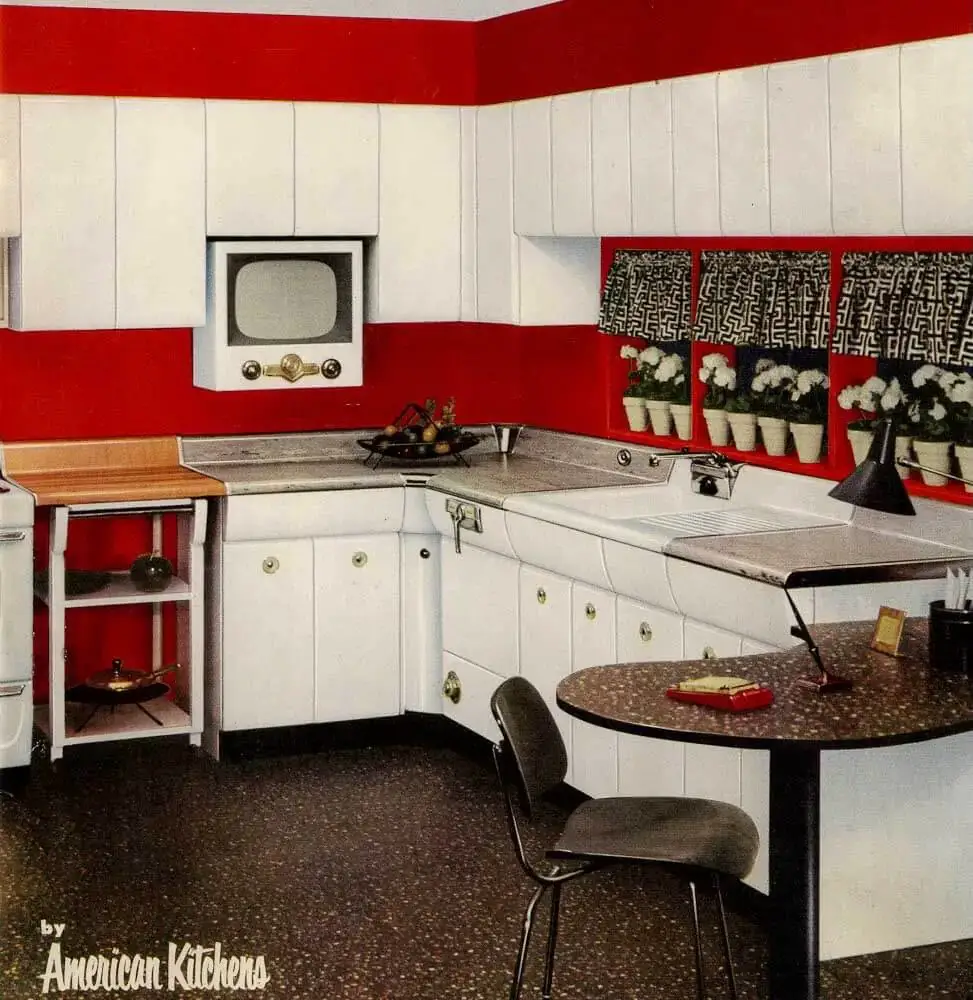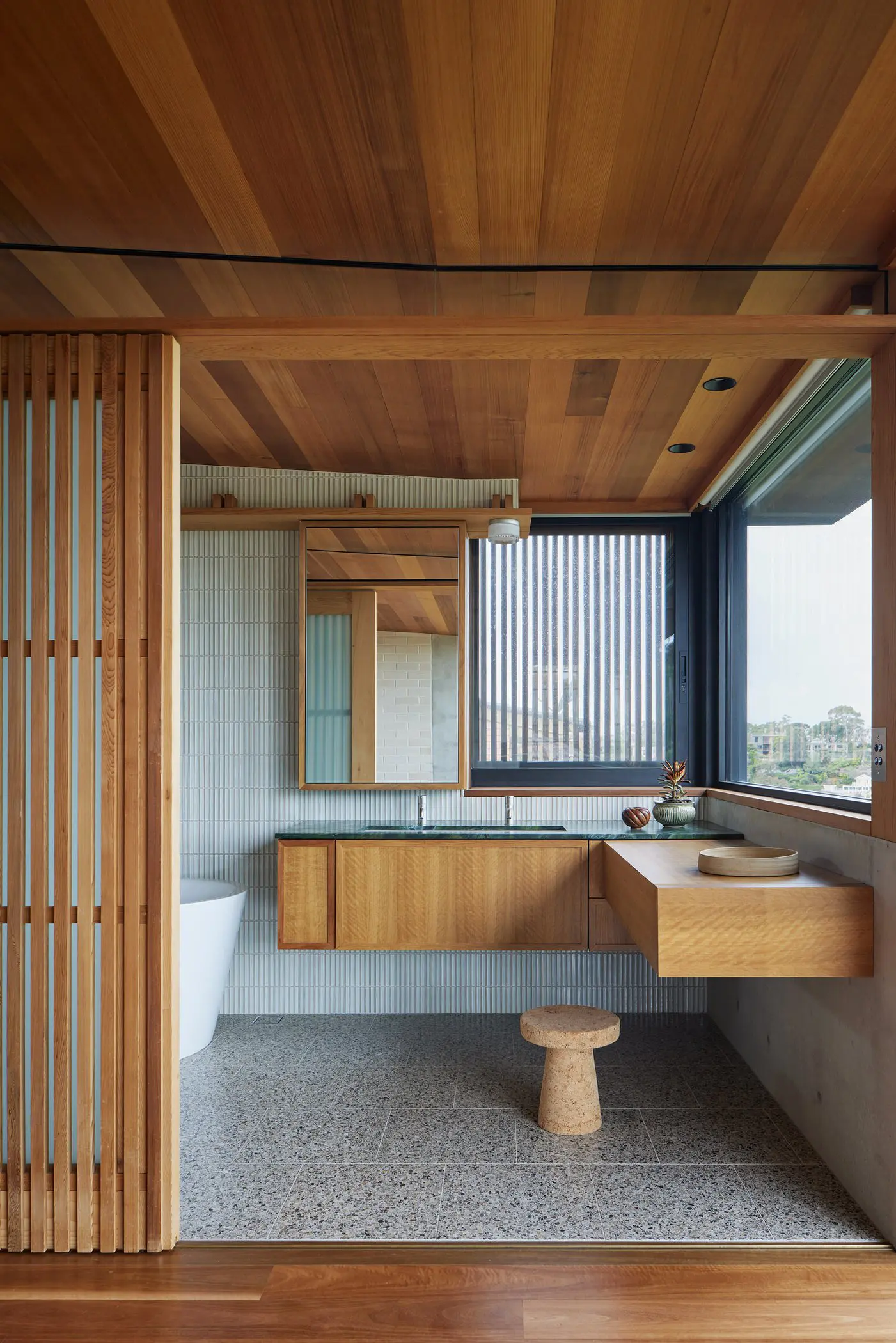
When renovating or remodeling a mid-century kitchen, choosing the right faucet is a very important step in maintaining an authentic mid-century aesthetic. Today, these fixtures remain popular for retro renovations, blending style with practicality in kitchens featuring elements like metal kitchen cabinets and bold linoleum floors. Below is everything you need to know to choose, maintain, and install the perfect faucet for your mid-century kitchen remodel.
Key Features of Mid-Century Faucets
- High-arching spouts for accommodating large cookware.
- Single-handle designs for ease of use.
- Integrated sprayers, often built into the faucet for added versatility.
- Finishes like chrome and stainless steel, which complemented the shine of metal kitchen cabinets and other retro decor elements.
Popular Models:
The Dishmaster M-76 is an enduring classic, first introduced in the 1950s. This faucet combined a built-in soap dispenser and brush with a sleek, functional design. Still in production today, it remains a go-to choice for retro renovations. You can purchase it directly from the Dishmaster Faucet Company.
For a modern faucet with mid-century appeal, the Kohler Triton Bowe features a streamlined design that works well in kitchens with metal kitchen cabinets. It’s available in polished chrome and other finishes that align with a retro aesthetic. Visit Kohler’s official site or authorized retailers for availability.
Central Brass has produced faucets since the mid-century era, making their designs a reliable choice for authentic retro renovations. They offer wall-mount and countertop models perfect for pairing with vintage sinks. These are available through specialty plumbing suppliers.
Strom Plumbing offers faucets designed for vintage farmhouse sinks, a common feature in mid-century homes. Their wall-mount faucets are ideal for kitchens that embrace both utilitarian and decorative retro styles.
Supplier and Installation Services
When sourcing faucets for your mid-century kitchen remodel, it’s best to work with suppliers specializing in retro and vintage designs.
- Locke Plumbing offers reproduction faucets that align with mid-century aesthetics.
- Dishmaster Faucet Company continues to sell updated versions of their classic models, making it easy to find a piece that complements your design.
For installation, seek out plumbing professionals experienced in retro renovations. Many mid-century faucets require adaptations to modern plumbing systems. Companies specializing in vintage home restorations can ensure proper installation and functionality.

Maintainance Tips for Vintage Faucets
Proper maintenance is crucial for keeping your faucet looking and working its best, especially in mid-century kitchens with metal cabinets, which emphasize polished and clean finishes.
- Daily Cleaning: Use a soft cloth and a mild dish soap solution to clean the faucet after use. Avoid abrasive cleaners that can damage finishes.
- Specialized Products: For chrome or stainless steel finishes, non-abrasive cleaners designed for these materials will preserve their shine.
- Avoid Harsh Chemicals: Products like vinegar, Magic Erasers, and abrasive powders can harm vintage finishes. Stick to manufacturer-recommended cleaning methods.
- Routine Maintenance: Check for leaks or worn-out parts regularly. Replace seals and washers as needed to prevent long-term damage.
Balancing Form and Function
If your kitchen has metal kitchen cabinets, they are the perfect backdrop for mid-century faucets. The reflective surfaces of the cabinets pair beautifully with chrome finishes, creating a cohesive, retro-modern look. To achieve the best results:
- Choose a faucet with a finish that complements the metallic tones of your cabinets.
- Consider the height and shape of the faucet to match the proportions of your sink and cabinetry.
- Look for designs with clean lines to maintain the sleek, uncluttered appearance that defines mid-century modern kitchens.
In conclusion, when planning the renovation of your mid-century kitchen, choosing a faucet that meets your needs is essential. High-arching spouts are practical for washing large pots, while integrated sprayers add versatility. For aesthetics, faucets like the Dishmaster or Kohler Triton Bowe bring both historical charm and modern usability.
Tools You Might Need
Finally, if you decide to install the faucet yourself, we have prepared a list of tools you’ll need for the job:
- Basin Wrench: A specialized tool designed to reach and tighten or loosen nuts located in tight spaces under the sink.
- Adjustable Wrench: Versatile for various nut and bolt sizes, allowing you to secure connections properly.
- Channel Lock Pliers: Useful for gripping and turning pipes or fittings, providing additional leverage when needed.
- Phillips and Flathead Screwdrivers: Necessary for assembling faucet components and securing mounting hardware.
- Plumber’s Tape (Teflon Tape): Applied to threaded connections to ensure a watertight seal and prevent leaks.
- Silicone Sealant: Used to seal the faucet base to the sink or countertop, preventing water seepage.





























